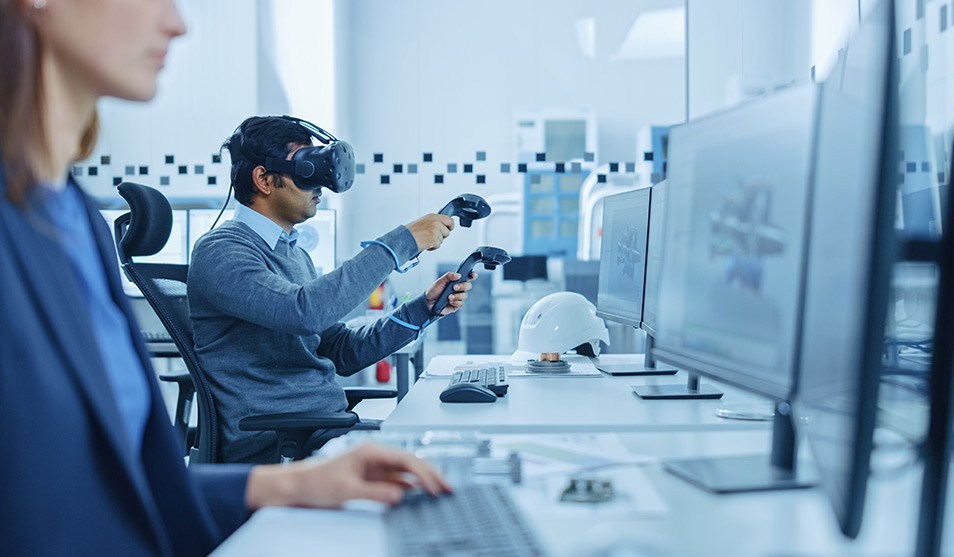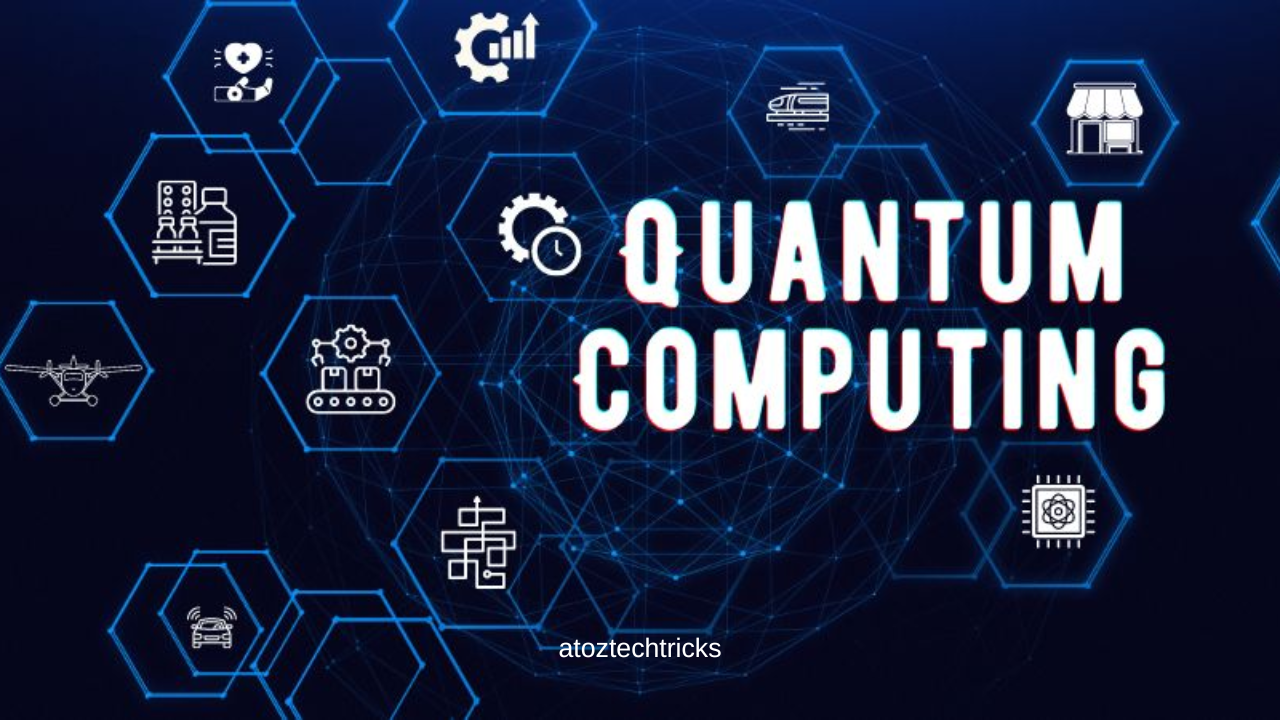Virtual Reality (VR) and Augmented Reality (AR) for Training and Simulations: Transforming Learning and Development
Virtual Reality (VR) and Augmented Reality (AR) are not just buzzwords in the tech industry; they represent transformative tools that are revolutionizing how we approach training and simulations. By immersing users in lifelike scenarios or overlaying digital information in the real world, VR and AR enhance learning experiences, improve skill acquisition, and boost training efficiency across various sectors. This article explores the profound impact of VR and AR on training and simulations, examining their applications, benefits, challenges, and future potential.
Understanding VR and AR
Before diving into their applications in training and simulations, it’s essential to understand what VR and AR entail.
Virtual Reality (VR): VR creates a completely immersive digital environment that users can interact with through specialized equipment like VR headsets, motion controllers, and haptic feedback devices. The primary goal is to transport users to a simulated environment that feels real, allowing them to engage with and explore different scenarios as if they were physically present.
Augmented Reality (AR): AR overlays digital information onto the user’s view of the real world. Unlike VR, which creates a separate environment, AR enhances the real world with digital elements such as graphics, sounds, or data. Users interact with these elements while still being aware of and engaging with their physical surroundings.
Internet of Things (IoT): Revolutionizing Connectivity and Innovation
Applications of VR and AR in Training
1. Healthcare and Medical Training
In healthcare, VR and AR are transforming medical training and simulations by providing realistic, risk-free environments for practising complex procedures.
Surgical Training: VR platforms offer simulated surgeries where medical professionals can practice techniques, familiarize themselves with new equipment, and perfect their skills without the risk of harming real patients. These simulations can replicate various conditions and scenarios, from routine procedures to rare complications, ensuring that practitioners are well-prepared for any situation.
Medical Education: AR applications can overlay anatomical information onto a patient’s body or provide interactive 3D models of organs and systems. This immersive learning experience enhances the understanding of human anatomy and medical conditions, allowing students to visualize and interact with structures in a way that traditional textbooks cannot offer.
2. Military and Defense Training
The military uses VR and AR to prepare personnel for combat situations, strategic operations, and equipment handling.
Combat Simulations: VR simulations recreate battlefield scenarios, enabling soldiers to practice tactical manoeuvres, decision-making, and crisis management in a controlled environment. These simulations can replicate various terrains, weather conditions, and combat situations, providing a comprehensive training experience that helps soldiers prepare for real-world scenarios.
Equipment Training: AR can assist in training military personnel on the use of complex equipment and machinery. By overlaying step-by-step instructions or visual aids onto the equipment, AR ensures that soldiers can quickly learn and retain operational procedures.
3. Industrial and Manufacturing Training
In industrial and manufacturing settings, VR and AR are improving safety, efficiency, and skills training.
Equipment Operation: VR simulations can teach workers how to operate machinery, navigate factory floors, and handle emergencies. These simulations allow employees to practice their skills in a safe environment, reducing the risk of accidents and equipment damage.
Maintenance and Repairs: AR provides real-time guidance for maintenance and repair tasks. By overlaying digital instructions and diagrams onto the physical equipment, AR helps technicians perform repairs more accurately and efficiently, reducing downtime and errors.
4. Education and Skill Development
VR and AR are enhancing educational experiences and skill development across various fields.
Virtual Classrooms: VR can create immersive virtual classrooms where students interact with teachers and peers in a digital environment. This approach can be especially beneficial for remote or underserved areas, providing access to quality education regardless of location.
Interactive Learning: AR applications can transform textbooks and learning materials into interactive experiences. By scanning pages with an AR app, students can access additional content, animations, and interactive elements that enhance their understanding of complex subjects.
5. Emergency Response Training
Emergency response teams benefit greatly from VR and AR simulations that prepare them for high-pressure situations.
Firefighting: VR simulations replicate fire scenarios, allowing firefighters to practice their response techniques, learn how to navigate smoke-filled environments, and deal with various fire conditions. This type of training helps improve their readiness and effectiveness in real emergencies.
Disaster Management: AR can provide real-time information and guidance during disaster response operations. By overlaying data such as building layouts, hazard locations, and first-aid instructions onto the field of view, AR helps responders make informed decisions quickly.
Implementing IoT in Business Operations: A Comprehensive Guide
Benefits of VR and AR for Training
The integration of VR and AR into training programs offers several significant benefits:
1. Enhanced Engagement and Motivation: Immersive experiences capture learners’ attention and make training more engaging. VR and AR can turn routine training sessions into interactive and stimulating experiences, boosting motivation and retention.
2. Safe and Risk-Free Environment: VR allows trainees to practice skills and procedures in a risk-free environment, reducing the likelihood of accidents or errors. AR helps minimize risks by providing real-time guidance and support during hands-on tasks.
3. Cost Efficiency: Although the initial investment in VR and AR technology can be high, these tools can ultimately save money by reducing the need for physical training materials, minimizing equipment damage, and improving training efficiency.
4. Flexibility and Scalability: VR and AR training programs can be easily updated and scaled to accommodate different learning needs. New scenarios and content can be added to simulations, and training programs can be adapted for various skill levels and requirements.
5. Improved Retention and Skill Acquisition: Interactive and immersive training experiences enhance learning retention and skill acquisition. VR and AR allow learners to practice and repeat tasks as needed, reinforcing their skills and improving their overall performance.
Challenges and Considerations
While VR and AR offer numerous advantages, there are also challenges and considerations to address:
1. High Initial Costs: The development and implementation of VR and AR training solutions can be expensive. Organizations must weigh the costs against the potential benefits and ensure that the investment aligns with their training objectives.
2. Technical Limitations: VR and AR technologies are continually evolving, and technical limitations may affect the quality and effectiveness of simulations. Ensuring compatibility with existing systems and addressing technical issues are essential for successful implementation.
3. User Experience and Accessibility: The effectiveness of VR and AR training depends on the quality of the user experience. Ensuring that simulations are intuitive, user-friendly, and accessible to all learners is crucial for maximizing the benefits of these technologies.
4. Health and Safety Concerns: Prolonged use of VR headsets may cause discomfort or motion sickness in some users. Organizations must consider these potential health issues and provide appropriate guidelines and support for users.
5. Content Development: Creating realistic and effective VR and AR training content requires expertise in both subject matter and technology. Organizations may need to collaborate with specialized developers and content creators to ensure high-quality simulations.

Future Potential of VR and AR in Training
The future of VR and AR in training and simulations holds exciting possibilities:
1. Advancements in Technology: As VR and AR technologies continue to advance, we can expect more realistic and immersive simulations. Improved graphics, haptic feedback, and real-time interaction will enhance the effectiveness of training programs.
2. Integration with AI and Machine Learning: The integration of artificial intelligence (AI) and machine learning with VR and AR can create adaptive training experiences that personalize learning based on individual performance and progress. AI-driven simulations can offer tailored feedback and recommendations, further improving training outcomes.
3. Expansion of Use Cases: VR and AR will likely find new applications in various industries and sectors. As the technology becomes more accessible and affordable, we can expect to see its adoption in fields such as agriculture, construction, and logistics, among others.
4. Enhanced Collaboration and Remote Training: The future of VR and AR will likely include improved collaboration features, allowing teams to work together in virtual environments regardless of their physical location. Remote training solutions will become more effective, enabling organizations to reach a global audience.
5. Increased Focus on User Experience: As VR and AR become more mainstream, there will be a greater emphasis on user experience and accessibility. Innovations in design and technology will make training solutions more intuitive and comfortable for users.

Virtual Reality and Augmented Reality are transforming the landscape of training and simulations, offering immersive and interactive experiences that enhance learning and skill acquisition. From healthcare and military training to industrial applications and education, VR and AR provide valuable tools for preparing individuals for real-world challenges. Despite the challenges and costs associated with these technologies, their benefits make them a worthwhile investment for organizations seeking to improve training effectiveness and efficiency. As VR and AR continue to evolve, their potential to revolutionize training and simulations will only grow, paving the way for more advanced and impactful learning experiences in the future.





Post Comment